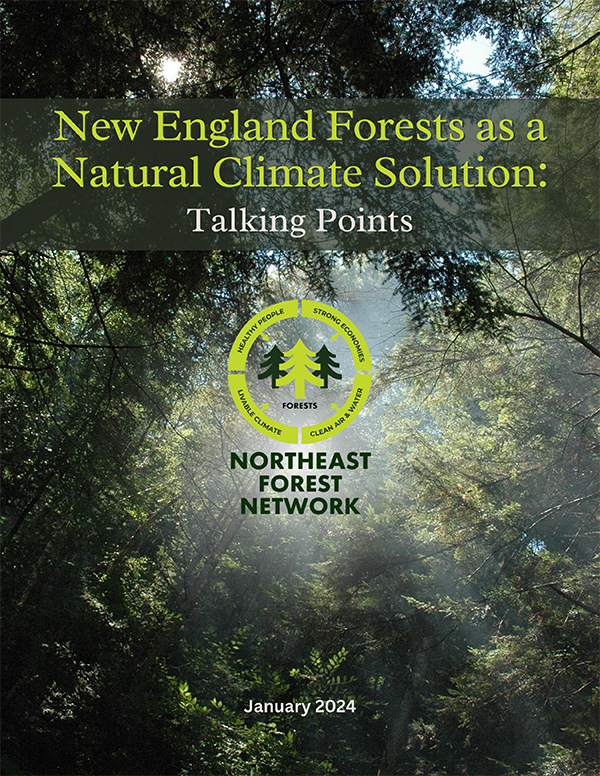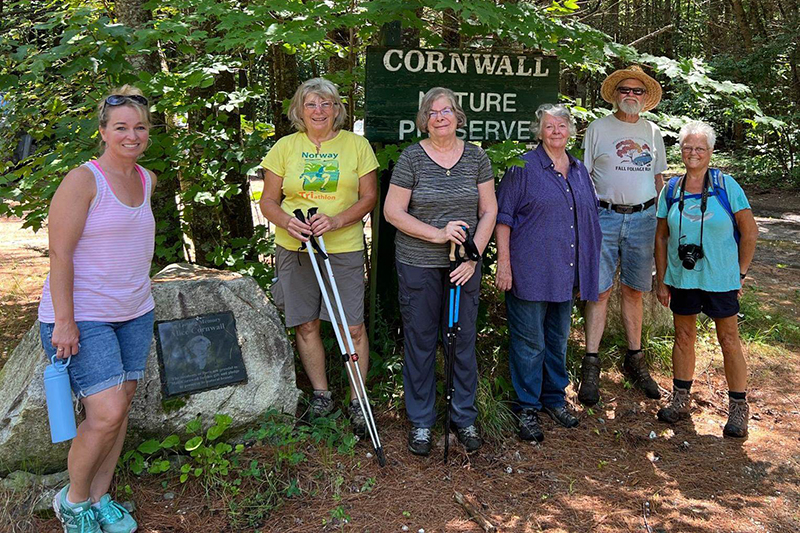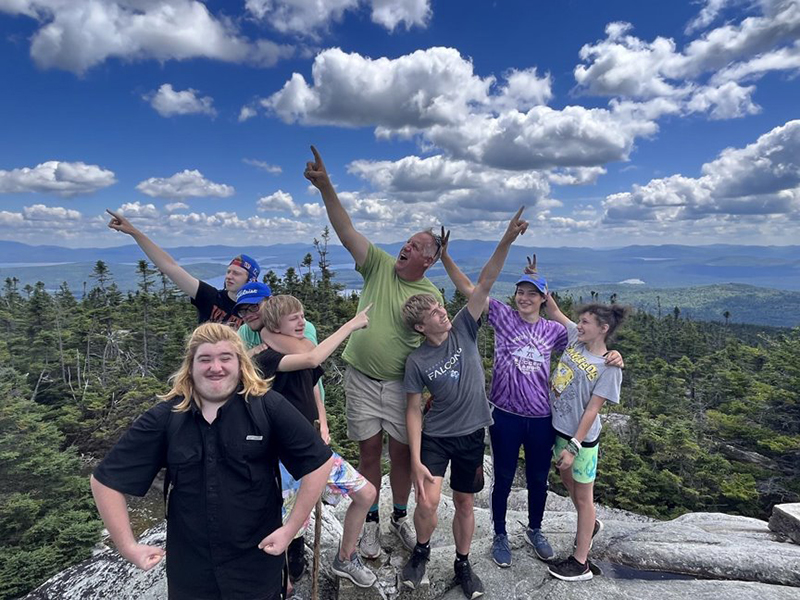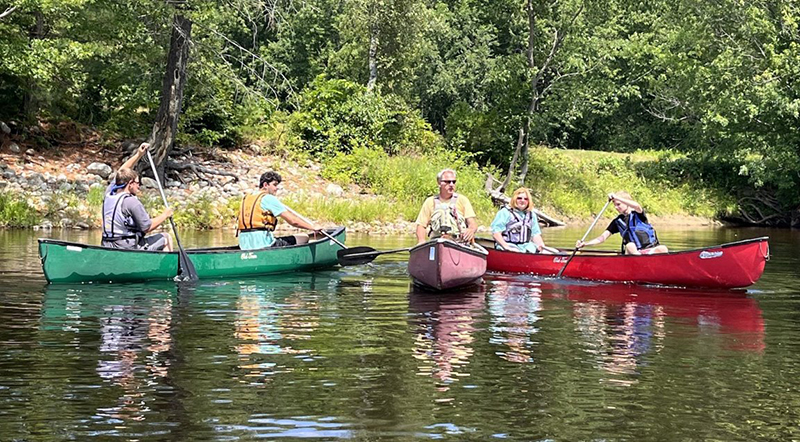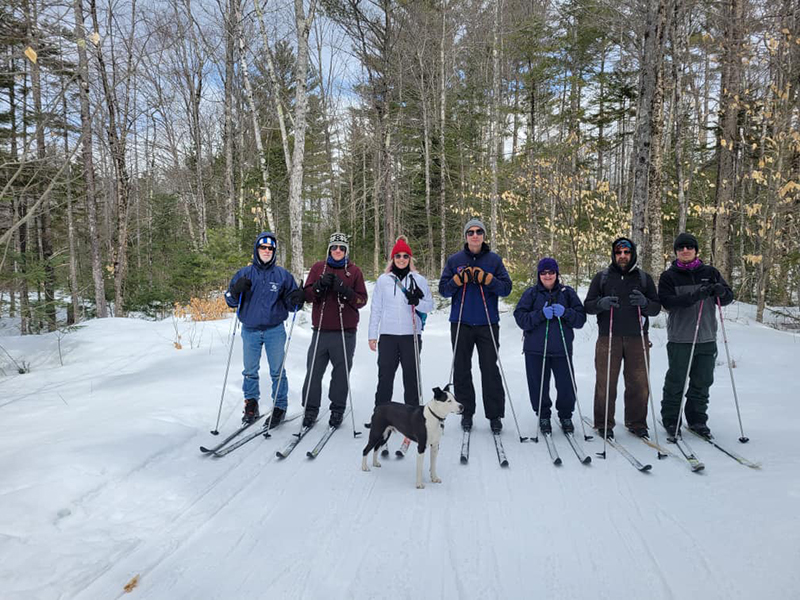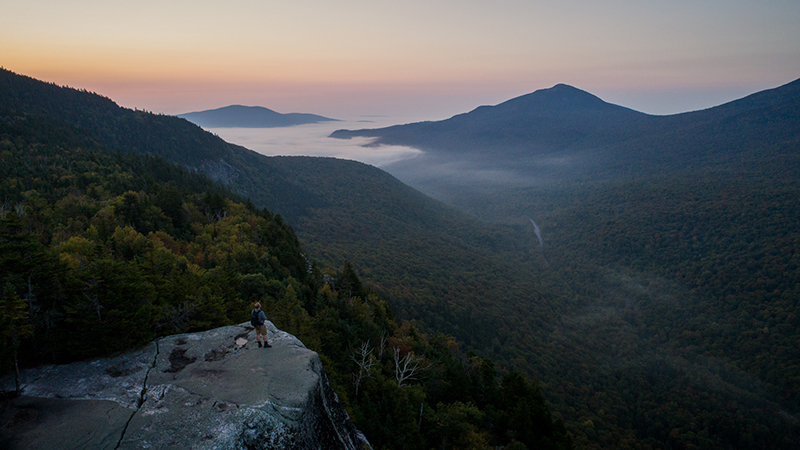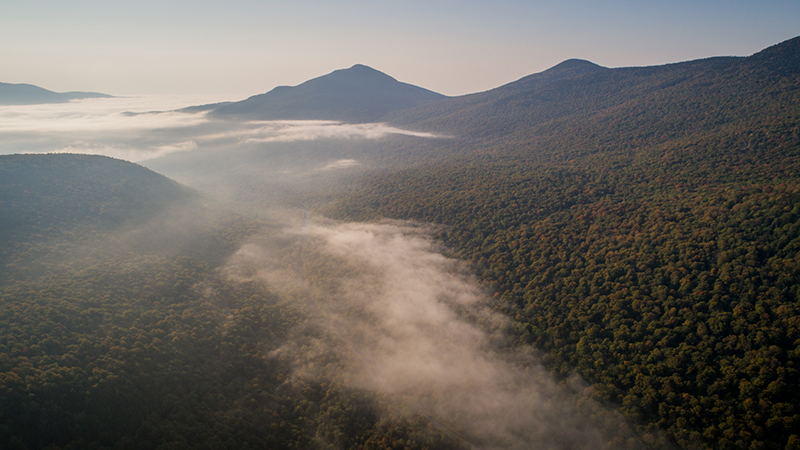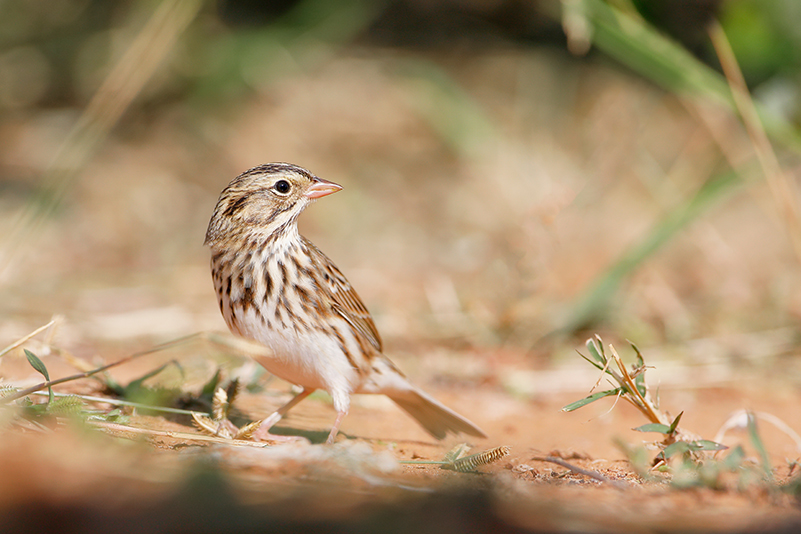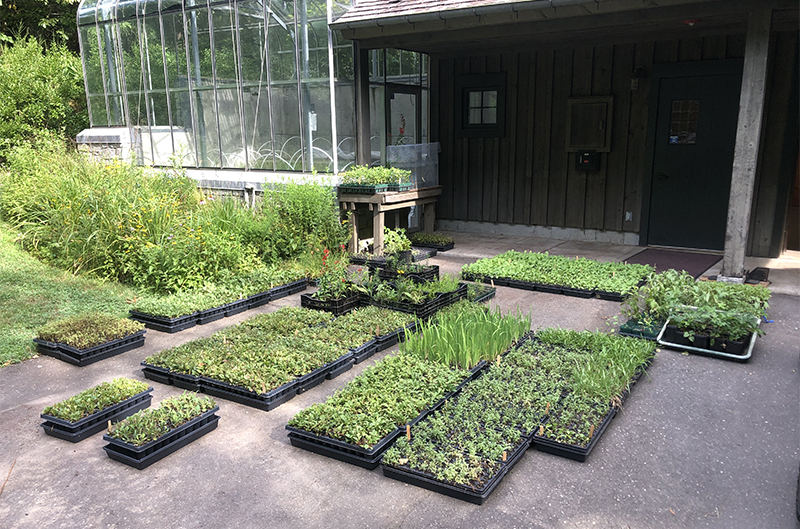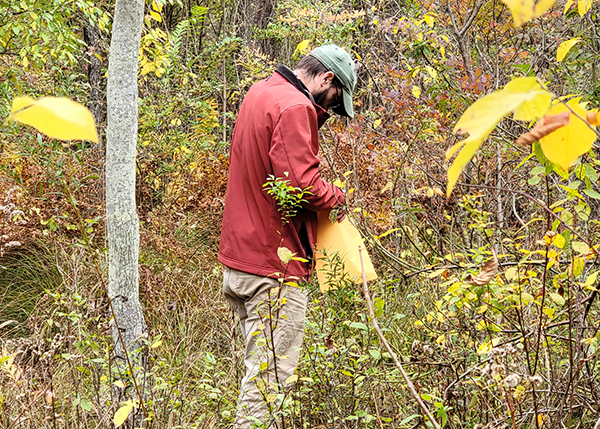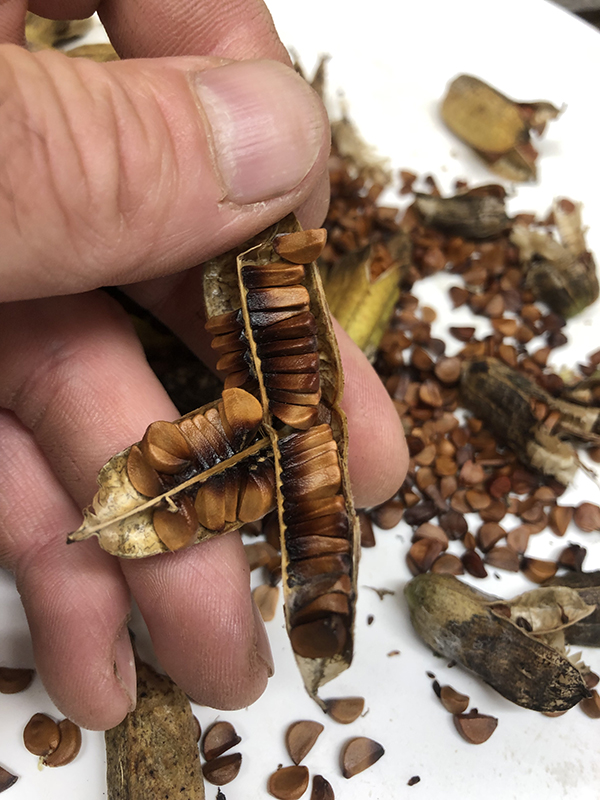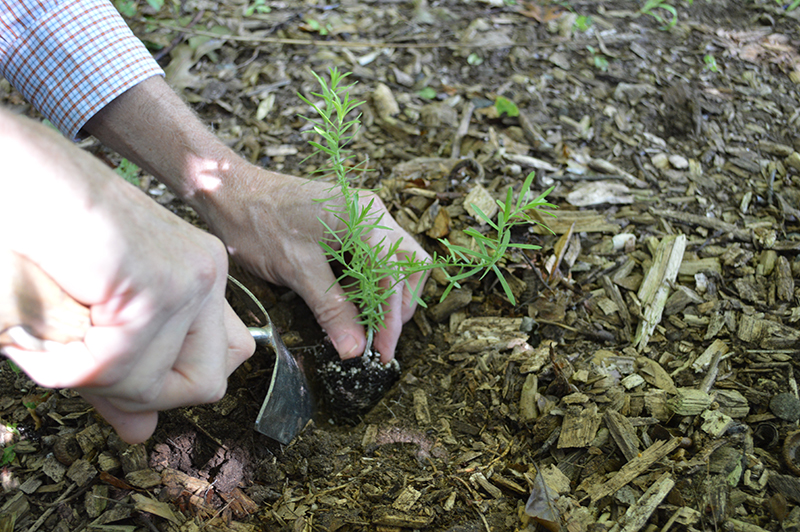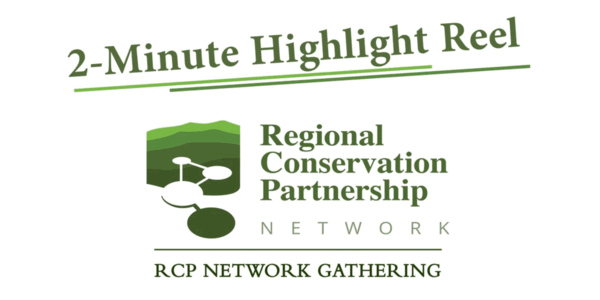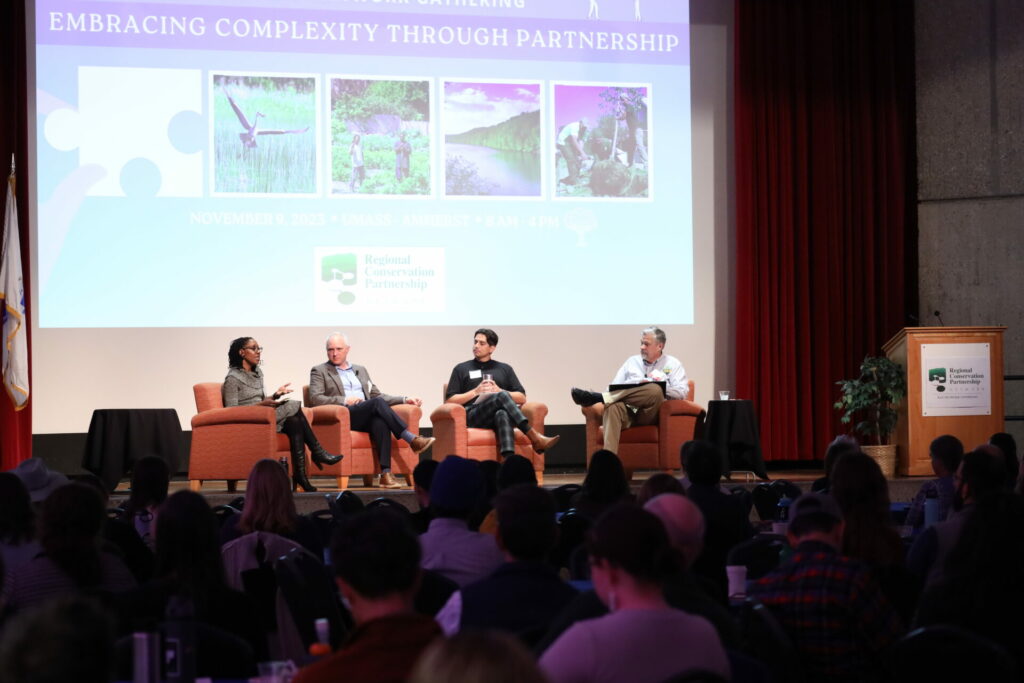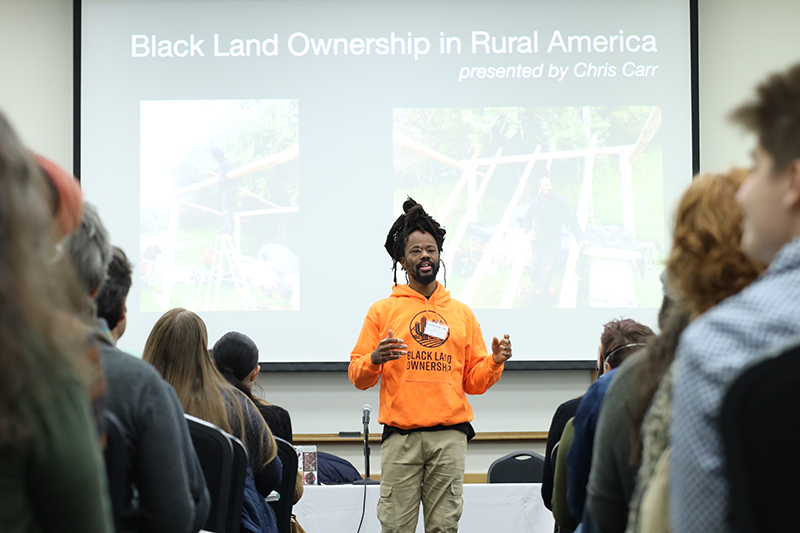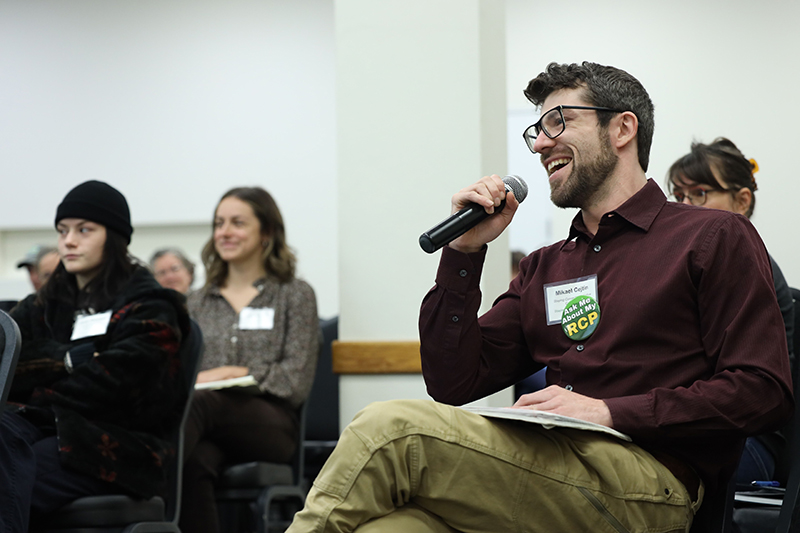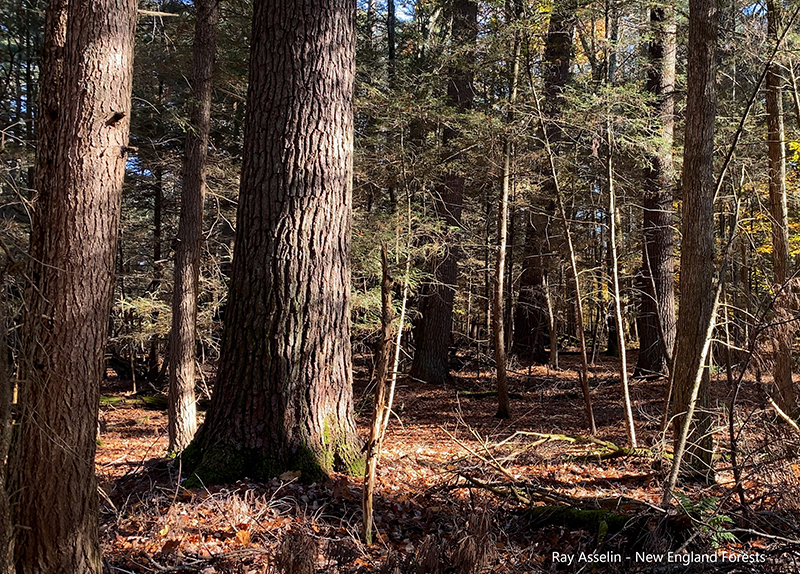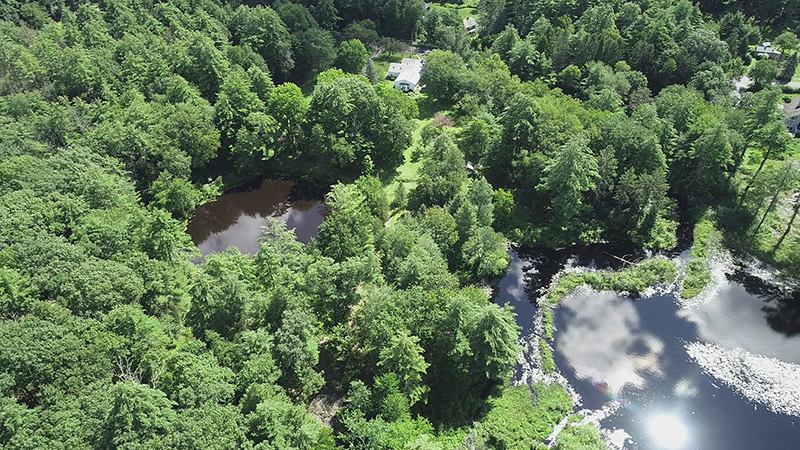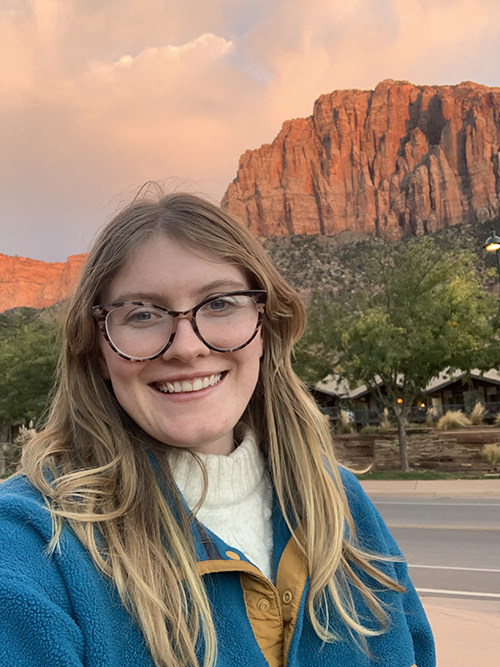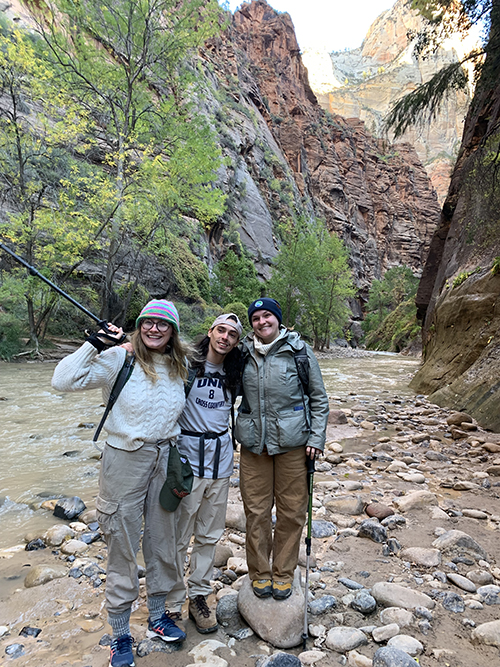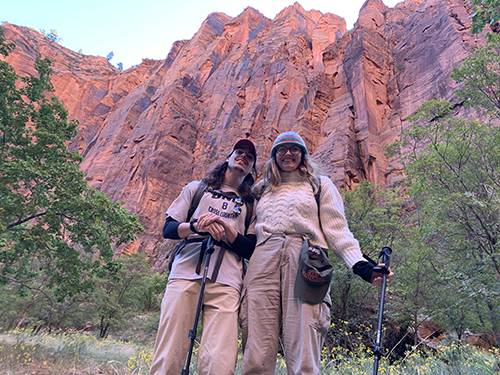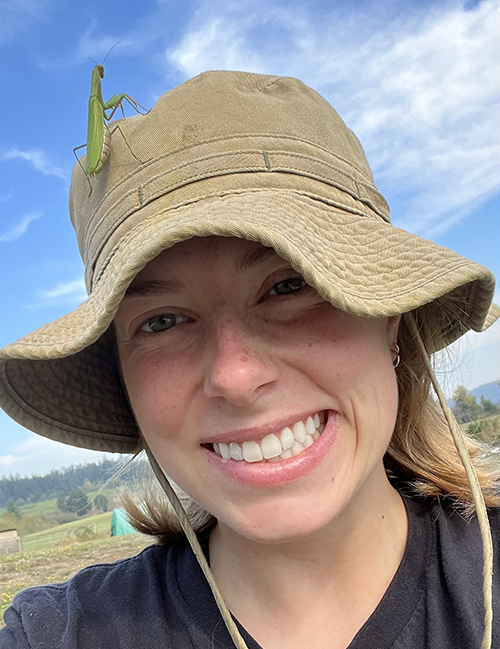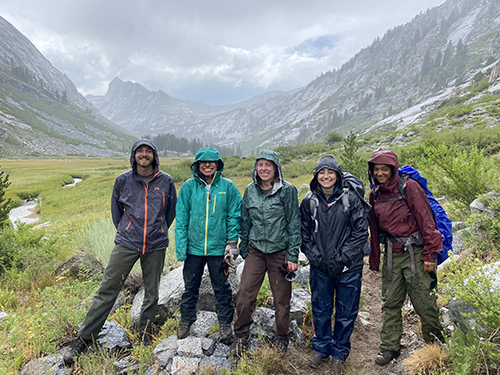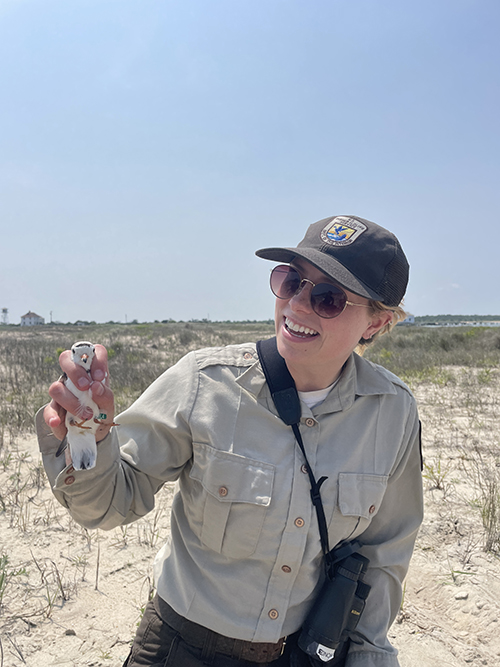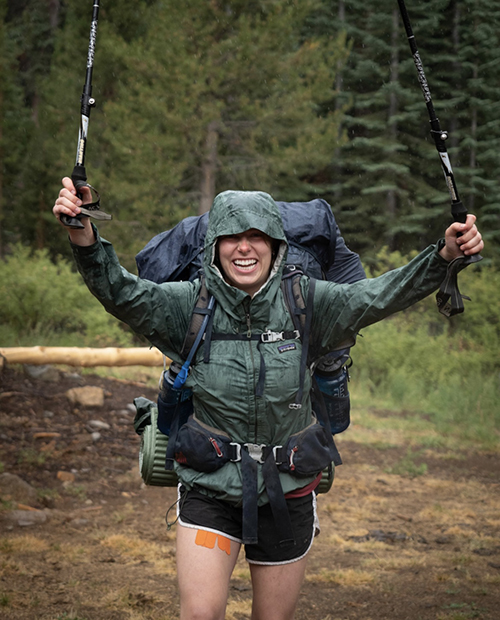The most widely used insecticides in the U.S., called neonicotinoids, or “neonics,” are deadly to birds, caterpillars, bees, and butterflies. In hundreds of studies, scientists link neonics to the sharp declines in populations of insects, including bees listed as threatened and endangered. Research also shows neonics harm the heart and brain development of children exposed in the womb, and in adults, lowers testosterone levels and links neonic exposure to liver cancer.

In an effort to educate Connecticut residents about the danger of neonics, Highstead and the Hudson to Housatonic RCP partner organization, the Pollinator Pathway initiative, co-sponsored a conference on March 11 to educate people about neonics’ danger and environmental harm. The conference, attended by 180 people, was co-led by The Connecticut Audubon Society, Rivers Alliance, and the Connecticut Coalition for Pesticide Reform.
Neonics have quickly swept one-fourth of the global market since their launch in 1991. Imidacloprid was the first commercially available neonic used to control grubs in turfgrass and is used in hundreds of other products, including insect sprays, seed treatments, soil drenches, tree injections, and ointments to control fleas in dogs and cats.
Neonics & Human Health
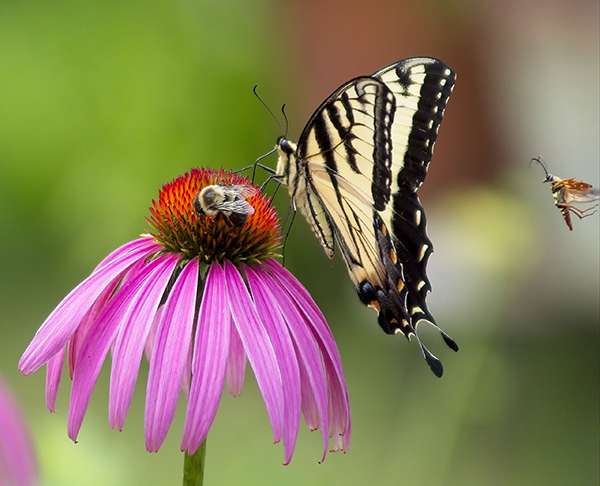
In a 2022 study of 171 pregnant women in the U.S., more than 95% had neonics in their bodies. Neonics behave like endocrine-disrupting compounds, said conference presenter Kathy Nolan, MD, senior research director at Catskill Mountainkeeper and president of the Physicians for Social Responsibility’s New York chapter. Research shows neonics harm the heart and brain development and increase the risk of autism spectrum disorder (ASD) in children exposed to it in utero. During a 10-year period ending in 2019, the Environmental Protection Agency received more than 1,600 reports of people and pets poisoned with the neonic used to kill grubs, with symptoms including muscle tremors, difficulty breathing, and memory loss.
Drinking water contamination exposes people and pets to neonics, given that conventional water treatment generally fails to remove neonics, Nolan said. Neonics are soluble in water, so people ingest them when eating food treated with neonics, she said. Almost 90% of drinking water contains neonics unless it has been charcoal filtered. The pesticide remains in the environment for up to 15 years, hollowing out ecosystems with its toxicity, Nolan said.
Neonics are synthetic nicotine compounds, and studies show they cause similar harm as nicotine, said conference presenter John F. Tooker, professor and extension specialist, Department of Entomology at Penn State University.
Maternal nicotine use disrupts developing fetus’ neurotransmitters, leading to birth defects and congenital abnormalities such as cleft lips and brain damage, Nolan said. “The developing embryo and fetus [exposed to neonics] cannot adapt. The miracle of normal development requires cell-to-cell communications.”
The U.S. Centers for Disease Control says half of Americans are exposed to neonics on any given day. Neonics exposure has been linked to: birth defects in the heart and brain; autism-like symptoms; decreased sperm quantity and quality; decreased testosterone; and altered insulin regulation and changes in fat metabolism, Nolan said.

While scientists say more research needs to be done on neonics’ effects on humans, scientists look at how neonics affect other mammals for insights. For example, hunters noticed jaw deformities and genital abnormalities in deer that scientists believe come from exposure to neonics. Researchers in South Dakota did a study giving deer increasing amounts of neonics in their water. While even the control group wasn’t intentionally given neonics, the deer had neonics in their blood. “We don’t know where they’re getting their neonics,” Nolan said. As neonic exposure increased, offspring decreased in size, survival rate, and overall health, and the number of abnormalities increased. “There seemed to be bioaccumulation,” Nolan said.
Neonics Banned in Europe
Based on the risk assessment by the European Food Safety Authority in 2018, the European Union has prohibited all outdoor use of three types of neonics with a few exceptions, mainly due to their risks to non-target organisms, especially pollinators, an Environment International article reports. One square foot of grass treated with neonics at U.S. Environmental Protection Agency-approved levels contains enough neonics to kill 1 million bees, reports the National Resources Defense Council (NRDC). Yet, the EPA recently affirmed its designation of coated seeds as “treated articles,” which exempts them from pesticide regulation, reports the Xerces Society.

Neonics get into the streams and rivers through runoff “and kill the building blocks of all our ecosystems. They don’t stay in one place. They can be taken up into a plant,” said Louise Washer, co-founder of the Pollinator Pathway and president of the Norwalk River Watershed Association in an interview. Neonics kill aquatic insects that serve as food for frogs, fish, bats, bees, butterflies, and other pollinators, she said. When plants take up neonics, the pesticide is transported to all the tissues, including the leaves, flowers, roots, stems, pollen and nectar, which makes them deadly for caterpillars, the birds that eat the caterpillars, and bees.
The increase in neonic use has led to reductions in bird biodiversity, particularly grassland birds and birds that eat insects, with the average annual population reduction rates at 4% and 3%, respectively, reports a 2020 paper in Nature Sustainability. When calculating population declines on future population growth, grassland bird populations are shrinking by 12% and insect-eating birds by 5%. Just one seed coated with neonics is enough to kill a songbird, she said.
Because 95% of the neonics end up in the soil and water, bees sipping from puddles where neonics have been used will die, said conference presenter Louis Robert, retired agronomist and grain crop specialist for the Ministry of Agriculture, Food and Fisheries of the Province of Quebec. Publicly funded research published in Plos One in 2020 showed no increase in crop yield from insecticide-coated seeds in 84 field crop trials, Robert said.
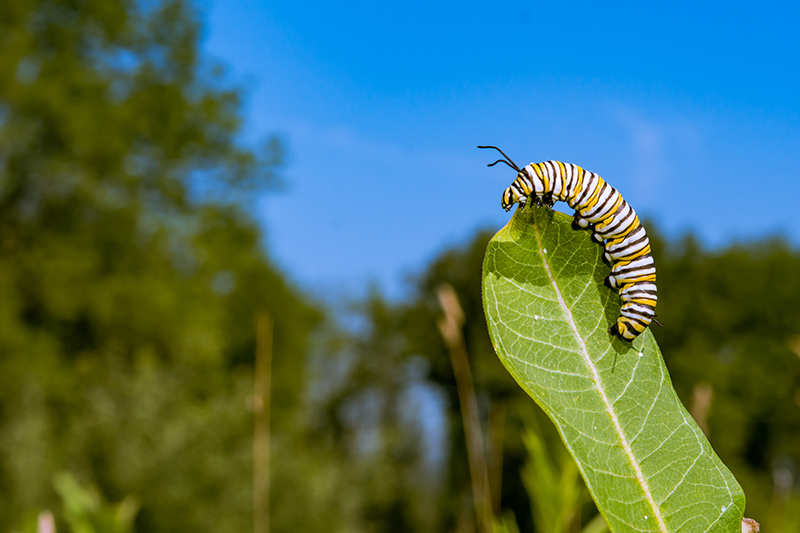
Strength in Numbers
The Connecticut state legislature’s Environmental Committee is considering a bill, SB 190, in which the pesticide reform coalition seeks to limit the use of neonics on trees and shrubs except when there is an environmental emergency, such as an invasive insect pest, and neonics are deemed the only way to address it. Similar efforts that have passed in Maine, Maryland, Nevada, New Jersey, and, New York and are underway in Vermont and Massachusetts.
Washer worked with other environmentally minded organizations to form the coalition to educate the public and legislators about neonics’ environmental and public health harms. To learn from others in nearby states that have passed restrictions, Washer reached out to Daniel Raichel, director of pollinators & pesticides at the NRDC. Raichel helped lead the charge in New York state to ban neonics.
Neonics do not stay on the grubs they’re intended to kill and end up in drinking and groundwater. The percentage of neonics found in drinking and groundwater in the U.S. varies from study to study, with amounts ranging from about 63% to 96% of drinking water samples conducted from 2017 to 2021. Testing of the Norwalk River found 30 pesticides, 19 of which are harmful to aquatic life, including the neonic imidacloprid used to kill grubs, Washer said. The USDA began pesticide monitoring of raw intake and finished drinking water in 2001 and ended the program in 2013 due to financial constraints.
Neonics end up in our food, environment, and bodies multiple ways – through the spray application on lawns and ornamental landscaping, on agricultural plants, and through neonic-coated seeds. Unless they’re organic, the seeds planted to grow corn in Connecticut are coated with neonics. More than 800 million corn seeds are planted each year; the plant only takes up 1-5% of the poison, while 95% ends up in the soil and water, Tooker said. Multiple studies, including a 2020 Cornell University study, concluded that neonic treated corn, soy, and wheat seeds provide “no overall net income benefits” to farmers.
“We’re hollowing out the whole ecosystem of the river so we don’t have a few brown patches on lawns?” Washer said. “There’s really no argument for neonics.”
